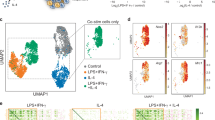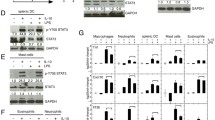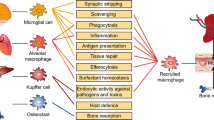Abstract
IFN-γ rapidly primes the macrophage via JAK1/2-STAT1 pathway so that it can subsequently undergo a slower classical type 1 activation upon exposure to T helper (Th)1 cytokines such as IFNγ or other activators, including tumor necrosis factor and lipopolysaccharide, e.g. in intracellular killing of phagocytosed Mycobacterium tuberculosis. If instead it is driven by Th2 cytokines interleukin (IL)-4 and IL-13, it undergoes alternate type 2 activation, which enhances endocytotic antigen uptake and presentation, mast cell and eosinophil involvement and type 2 granuloma formation, e.g. in response to parasitic and extracellular pathogens. Particle-induced macrophage activation was shown to differ from classical and alternate activation, showing in DNA microarray experiments (complete linkage/ Euclidean distance metric analysis) upregulation of nonsecreted structural/signaling molecules and lack of secreted proin-flammatory cyto- and chemokines. The switch-off (deactivation) of already activated macrophages is an active, controlled process in which IL-10 and corticosteroids play important roles and to which15dPGJ2, PGA1/2 and vasoactive intestinal peptide often contribute.
Similar content being viewed by others
Author information
Authors and Affiliations
Corresponding author
Additional information
Received 16 January 2003; received after revision 14 March 2003; accepted 2 April 2003
Rights and permissions
About this article
Cite this article
Ma, J., Chen, T., Mandelin, J. et al. Regulation of macrophage activation. CMLS, Cell. Mol. Life Sci. 60, 2334–2346 (2003). https://doi.org/10.1007/s00018-003-3020-0
Issue Date:
DOI: https://doi.org/10.1007/s00018-003-3020-0




